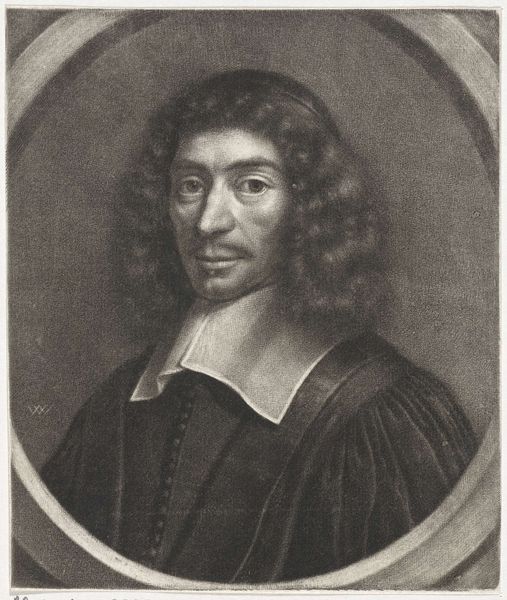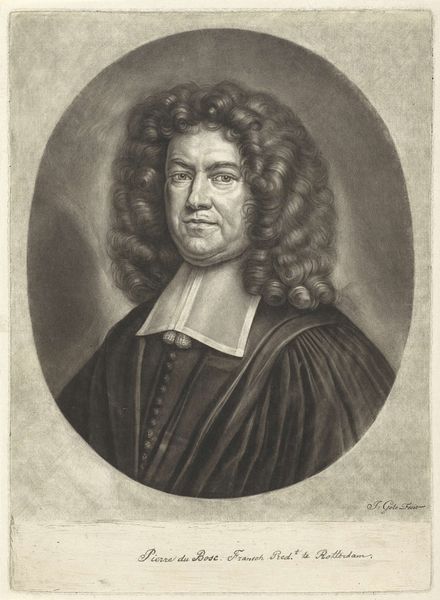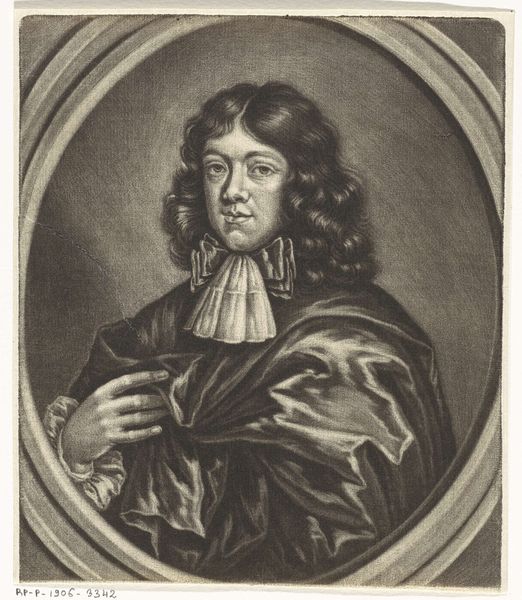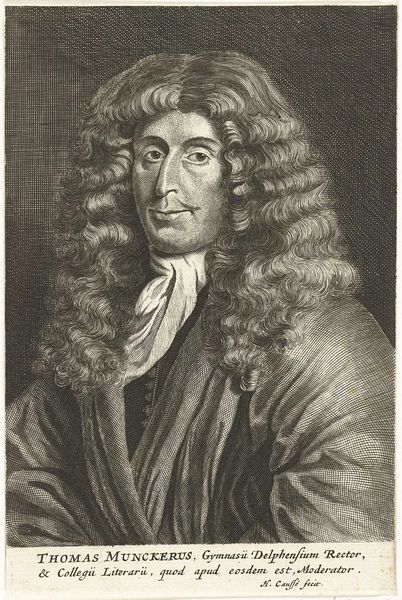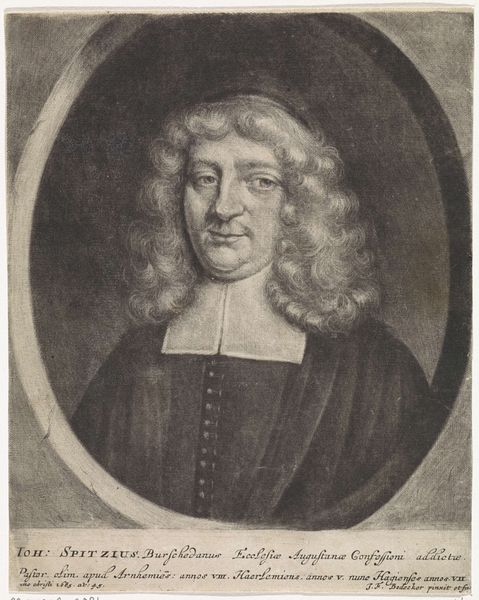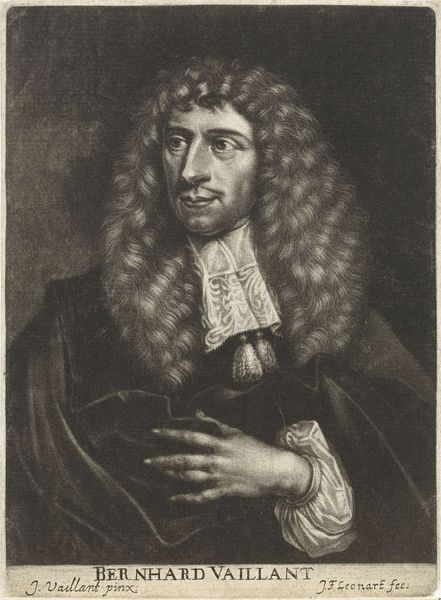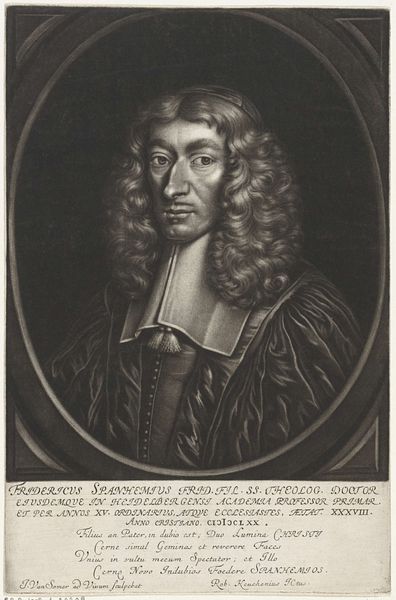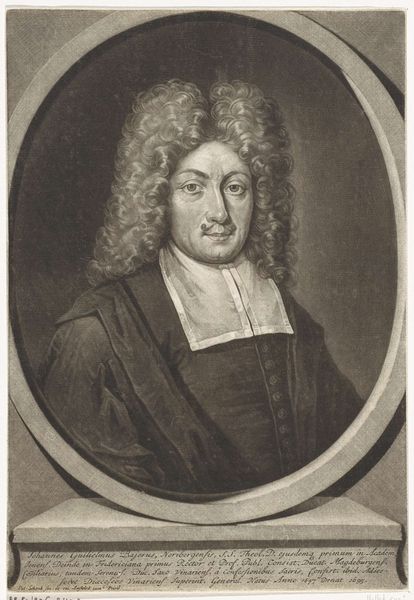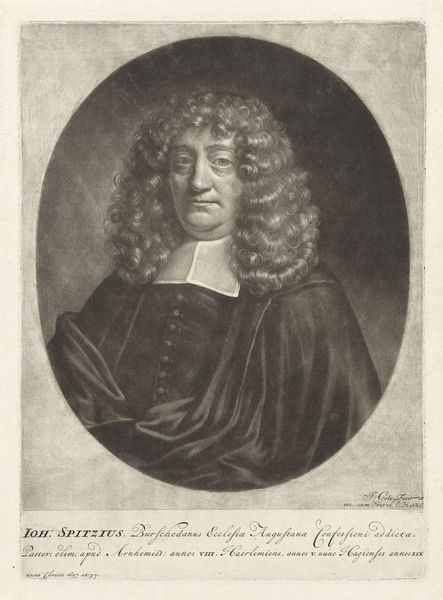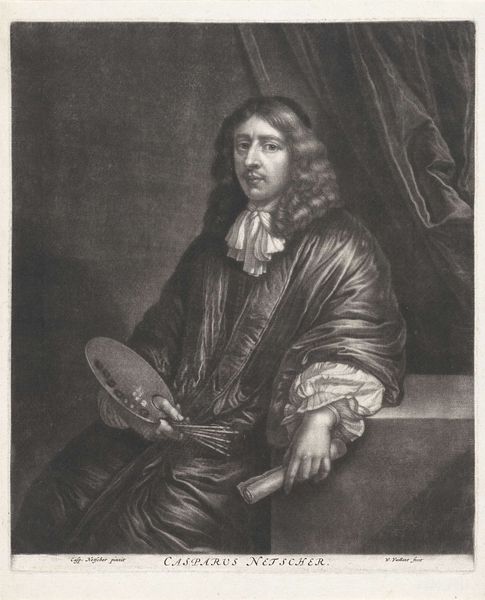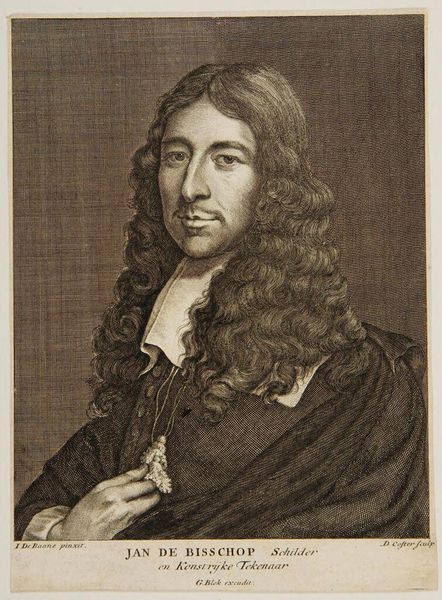
engraving
#
portrait
#
baroque
#
dutch-golden-age
#
portrait
#
engraving
Dimensions: height 215 mm, width 147 mm
Copyright: Rijks Museum: Open Domain
Curator: I'm immediately drawn to the serious countenance and intensity emanating from the eyes. There’s a depth that feels probing and introspective. Editor: We’re looking at “Portret van de theoloog Antonius Cregutus,” an engraving by Jan van Somer. Its creation is dated sometime between 1655 and 1693. The details highlight the sitter's profession – D. et Professor SS. Theologiae – hinting at a deeper engagement with faith and knowledge, even now. Curator: That textual inclusion is interesting; it literally frames him within the discourse of theology and intellectualism. Did these titles also reflect access or barriers based on identities such as race or gender in this historical moment? What perspectives were inherently excluded from these theological discussions? Editor: Absolutely. Cregutus lived in a time of immense social and religious upheaval. Analyzing the context is important: Consider the immense power held by religious figures, and the sociopolitical implications tied to their roles during this era of colonial expansion. Van Somer’s technique employs precise lines to construct Cregutus’s form, while simultaneously upholding those power dynamics. Curator: The subject's gaze, seemingly fixed upon the viewer, feels deliberate, demanding consideration beyond a surface-level glance. I am forced to think of the gaze and consider, what does it mean that Cregutus—presumably, a person of stature within the dominant group—is given this platform? How do such depictions of power uphold or challenge existing social hierarchies of the time, and who benefits? Editor: Precisely. The engraving becomes more than a mere likeness; it's a curated statement, embedded within societal structures and discourses. Portraits such as this played a vital role in shaping the visual culture and perception of power and influence during the Dutch Golden Age, and how theology was framed. Curator: Indeed, this allows for a conversation about how representations of authority operate – not just as images, but as active participants in maintaining particular ways of thinking and ordering the world. It provokes questions about agency and who holds the authority to be seen, and, conversely, unseen. Editor: That's insightful. Reflecting on the artwork, it underlines that even seemingly straightforward portraits can open pathways into exploring complex intersections of power, representation, and societal frameworks.
Comments
No comments
Be the first to comment and join the conversation on the ultimate creative platform.
